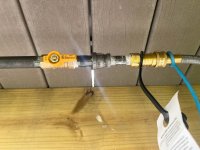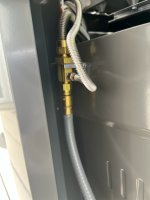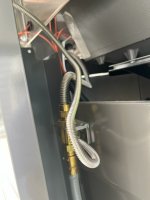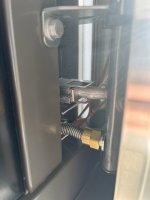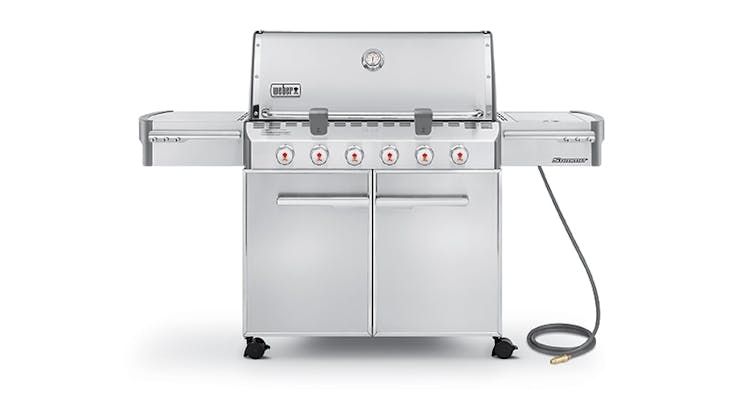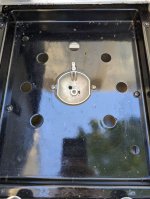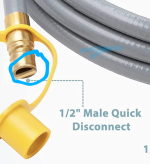JeremyStimpson
New member
New to the board, but long-time Weber owner. I did search the board for some info but need some guidance as wasn’t entirely sure what some of the solutions meant.
We built a new house in 2020, had the builder put a Natural Gas port on the outside of the house under the deck. I had a plumber run black pipe from the port to a corner on my deck two weeks ago. I had picked up an SE-335 in 2021 with the plan of running the line but just never got to it and my existing Genesis was running well but was getting tired of lugging tanks up to my deck or running out of gas on long burns.
Hooked up the new SE-335 and I am having difficulty getting to have all four burners remain on. The hottest I can get the grill is 275 degrees after 25 minutes. Even with one burner on it here is barely enough gas to get much of a flame. I am VERY BUMMED.
I checked my connection (see attached), I’ve soaped my lines for leaks but I am at a loss. My NG stove, water heater, furnace, gas fireplaces, etc. all run fine indoors (I’ve tried running the grill with everything off inside).
The line we ran outside was a 1/2”, that is what I had three different contractors recommend including the contractor that did the original build.
1) Is there an adjustment that I can make to the grill? I’ve read some posts about changing out the orifices(?) if your gas pressure available is less than desirable?
2) If I changed the outside black iron pipe to 3/4” would that help at all?
3) If I increased the gas pressure to the house would that help? Not sure if I can get a different regulator, etc and what impact that would have on other appliances.
Thank you all for your help.
We built a new house in 2020, had the builder put a Natural Gas port on the outside of the house under the deck. I had a plumber run black pipe from the port to a corner on my deck two weeks ago. I had picked up an SE-335 in 2021 with the plan of running the line but just never got to it and my existing Genesis was running well but was getting tired of lugging tanks up to my deck or running out of gas on long burns.
Hooked up the new SE-335 and I am having difficulty getting to have all four burners remain on. The hottest I can get the grill is 275 degrees after 25 minutes. Even with one burner on it here is barely enough gas to get much of a flame. I am VERY BUMMED.
I checked my connection (see attached), I’ve soaped my lines for leaks but I am at a loss. My NG stove, water heater, furnace, gas fireplaces, etc. all run fine indoors (I’ve tried running the grill with everything off inside).
The line we ran outside was a 1/2”, that is what I had three different contractors recommend including the contractor that did the original build.
1) Is there an adjustment that I can make to the grill? I’ve read some posts about changing out the orifices(?) if your gas pressure available is less than desirable?
2) If I changed the outside black iron pipe to 3/4” would that help at all?
3) If I increased the gas pressure to the house would that help? Not sure if I can get a different regulator, etc and what impact that would have on other appliances.
Thank you all for your help.

